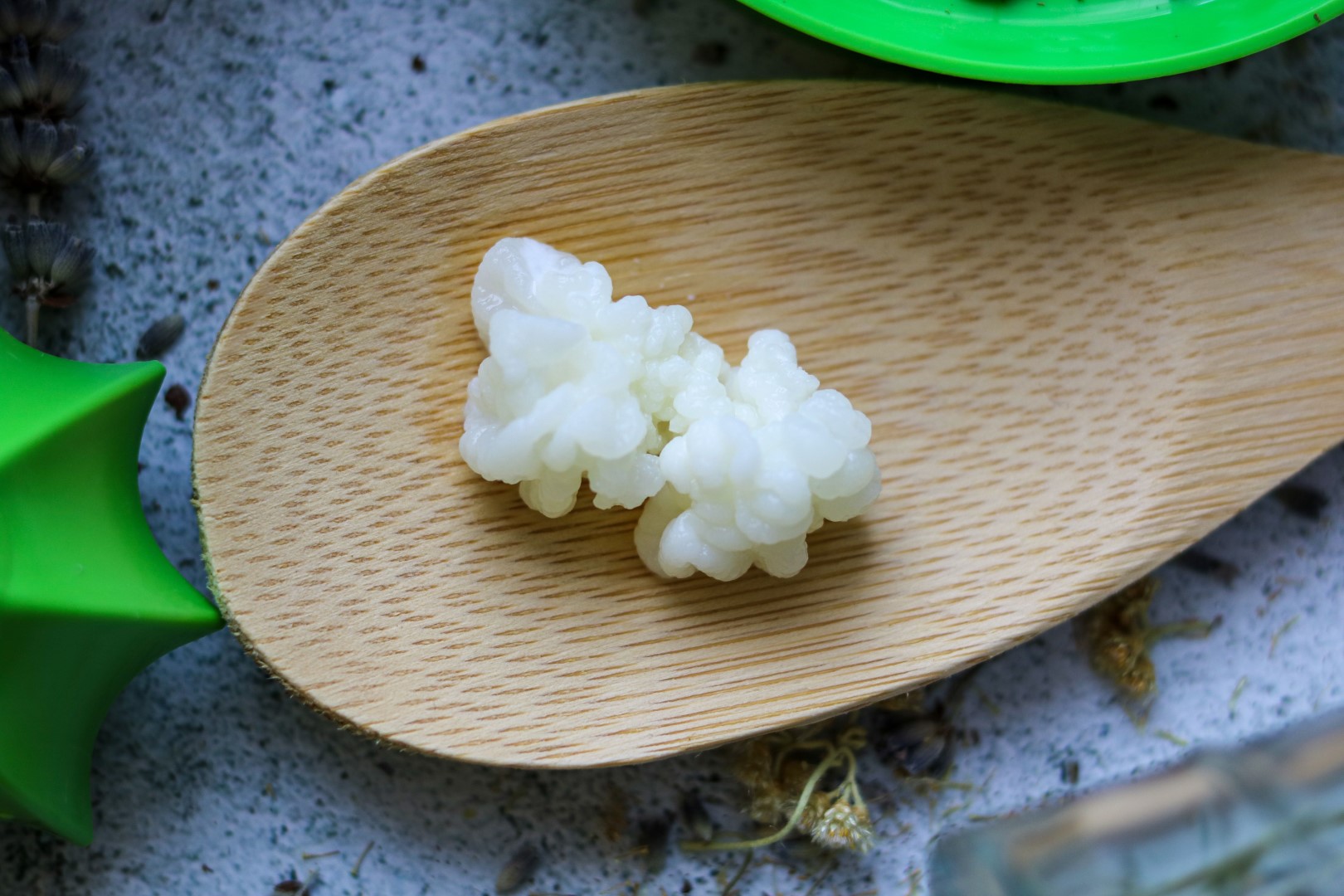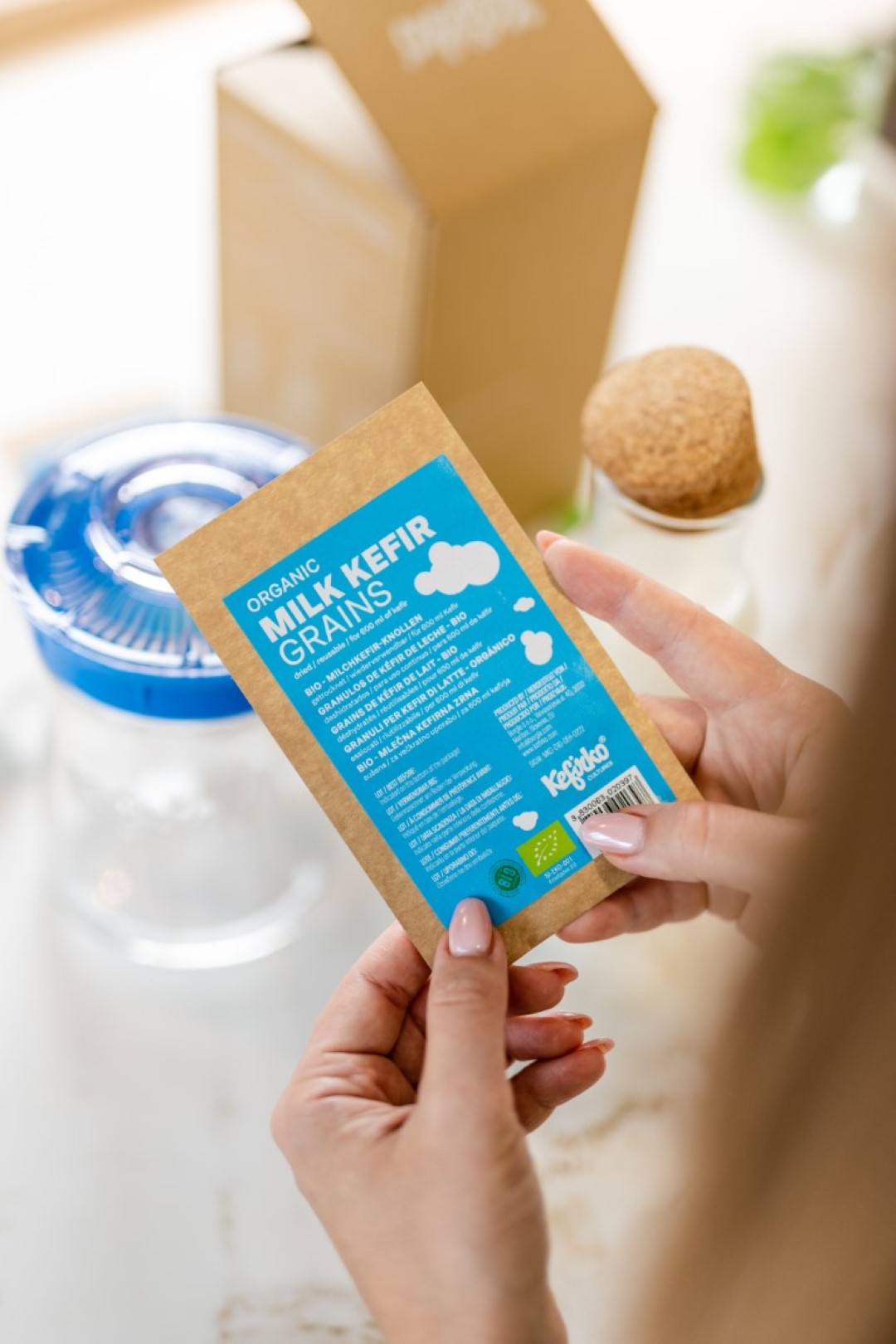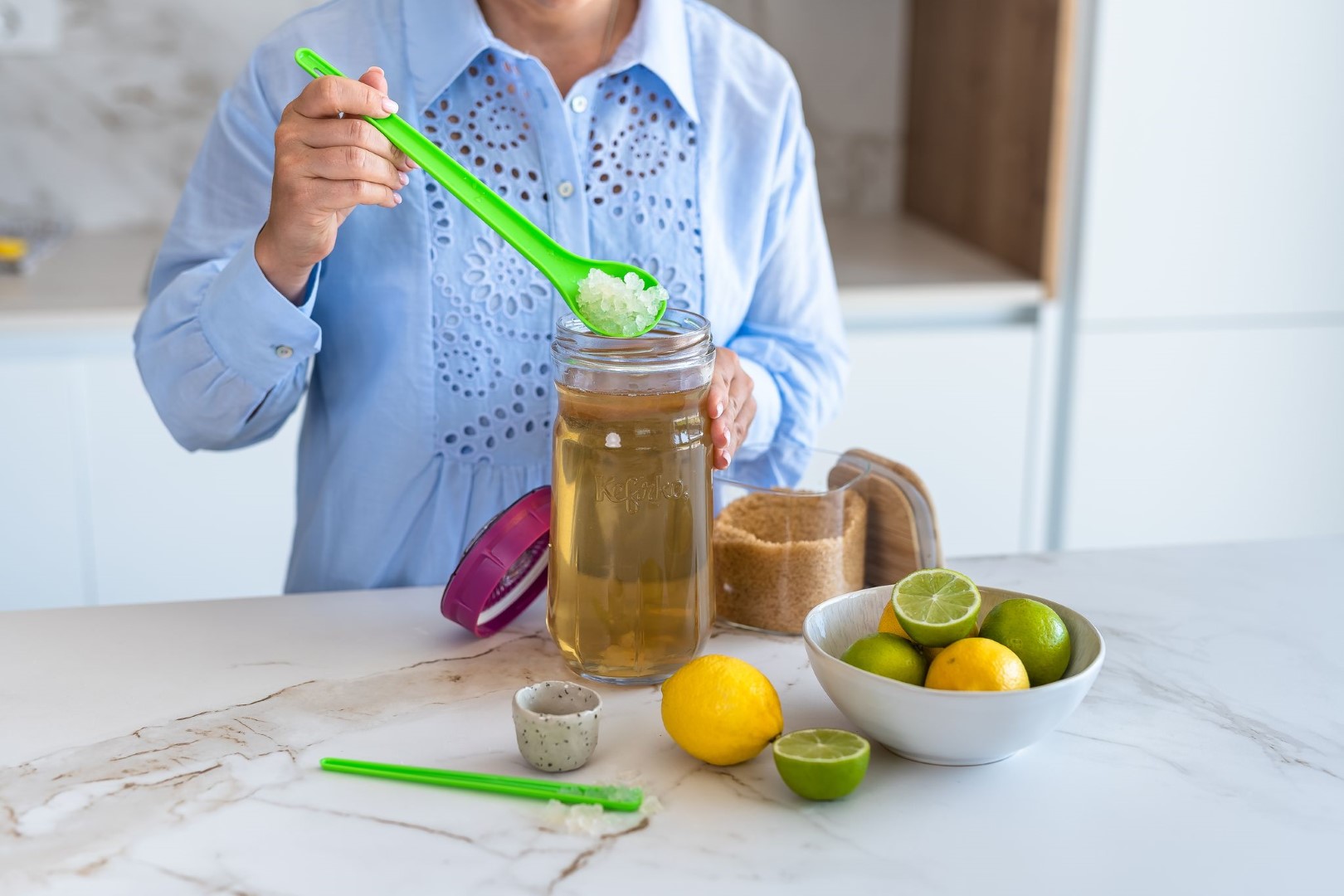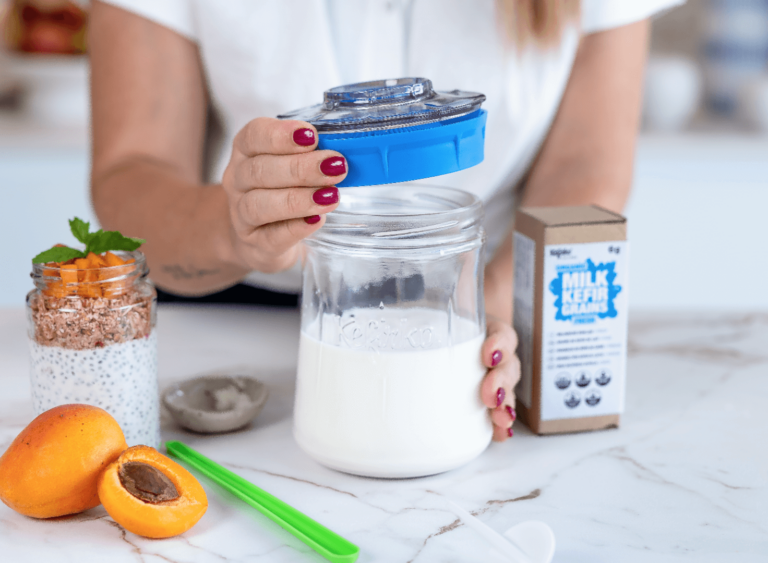Kefir grains – does size matter?

Though the size of kefir grains isn’t the main thing driving fermentation, when things go wrong, we often wonder if their size might be a factor causing issues. Let’s take a simple look at whether the size of these grains can play a part in how well fermentation works.
The size of kefir grains is influenced by a combination of factors, primarily the microbial composition within the grains and the environmental conditions they are exposed to during fermentation. Different strains of bacteria and yeast coexist within these grains, and their proportions can vary, leading to diverse sizes and shapes. The composition of the milk they ferment in also plays a role; the nutrients and sugars present in the milk can impact the overall growth and size of the grains.

Is size a crucial factor?
Kefir grains can vary significantly in size, but larger grains don’t necessarily produce better results. Smaller grains offer increased surface area, enhancing kefir quality. Manually mashing the grains to reduce size doesn’t necessarily improve outcomes. Instead, providing optimal warmth and nutrient-rich conditions allows the grains to naturally adjust their size, yielding beneficial results. Despite attempts to control conditions, kefir grains seem to instinctively adapt to their environment, reflecting the true essence of their seasonal cycle.
Growing and Multiplying Kefir Grains
Maintain a Proper Environment (temperature). Kefir grains thrive in a moderately warm environment, ideally between 20°C to 25°C.
Hygiene. Ensure that all utensils and containers used in handling kefir grains are clean. Avoid using antibacterial soaps, as residues can harm the grains.
Milk Kefir (Milk Quality: Use fresh, high-quality milk; Milk-to-Grain Ratio: Initially, use a higher milk-to-grain ratio to provide ample nutrients for growth).

Water Kefir (Sugar Source: Use a good-quality sugar source, such as organic cane sugar or molasses, as the primary energy source for water kefir grains; Minerals: Ensure the water contains some minerals. You can add unrefined sugar and a slice of lemon).
Regular Fermentation is important
Allow regular fermentation cycles. For milk kefir, this typically ranges from 12 to 48 hours, depending on preferences. For water kefir, a 24-48 hour fermentation period is common.
Periodically strain the kefir grains from the liquid, especially if they are growing in size. Rinse them gently to remove excess mucus with yeast on the surface.
Regularly feed the grains with fresh milk or sugar water.
Don’t miss out on the new content about fermenting!
Subscribe to Kefirko newsletter
Troubleshooting
Slow growth: Check for proper temperature, nutrient content, and hygiene.
Size and shape changes: Natural variations occur, but drastic changes may indicate stress; review your fermentation conditions.

Milk kefir grains
Kefir grains change shape in response to various factors like temperature, season, milk type, and overcrowding. In summer, they can become more limp and stretch out, resembling ribbons, particularly in hot weather or if there’s insufficient fat in the milk. The change in appearance is their way of adapting to seek more nutrients. Conversely, in cooler temperatures, they coil back into tighter formations resembling cauliflower florets. Squishing or blending them can also temporarily alter their shape.
Ensuring adequate milk quantity, providing a less crowded environment, or fermenting in cooler conditions can help them return to their normal rounded shape. Overall, these changes are natural adaptations to varying conditions and don’t necessarily indicate health issues.
Water kefir grains
Kefir grains undergo seasonal changes influenced by temperature, daylight, and environment, resulting in variations in size and appearance. In summer, grains are smaller and more numerous, while in winter, they tend to cluster and form larger irregular shapes. Changes in water, sugar type, and mineral content also affect their appearance. A filmy discolouration can occur due to an excess of minerals or sugars, but it’s typically harmless and can be resolved by adjusting the kefir solution.
Kefir fermentation is faster in summer, resulting in milder flavours, while winter fermentation tends to be slower and produces zestier, more sour kefir. Water kefir experiences even more fluctuations, often changing shape and taste frequently throughout the year.

The actual size of kefir grains may not be crucial as long as we achieve successful fermentation results. Therefore, it’s advisable not to overly fixate on their size if the fermentation process is yielding the desired outcomes. Nevertheless, an interesting observation is that, typically, when fermentation is successful, there is often an associated growth in the size of the grains.






Have several Kefirko products. Got the Kefir jar but the top doesn’t strain as well as I would like. I end up using another strainer. My grains vary as have to use 1% milk. I love the result though. I do a 2nd ferment with 1/2 banana. Makes it tasty and thick.
Hi! Are your grains too small or too big that you’re having difficulties straining the kefir? You can use the smaller slots in the first case and separate the grains in the second case to make them smaller. In any case you can use the scraper tool that makes straining the kefir very quick and convenient with the Kefir fermenter.
Thank you for the flavouring tip on the milk kefir! Sound delicious.